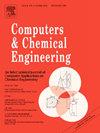Optimal continuous administration of drugs exhibiting tolerance: A modeling study for linear one compartment pharmacokinetics
IF 3.9
2区 工程技术
Q2 COMPUTER SCIENCE, INTERDISCIPLINARY APPLICATIONS
引用次数: 0
Abstract
For many drugs exhibiting tolerance, it is not possible to maintain efficacy without intermittently halting administration, enabling the body to restore its sensitivity to the drug. Periodic delivery is thus called for. Here we calculate the optimal periodic delivery protocol to maintain efficacy for the largest fraction of time. Calculations are based on a model assuming that tolerance is due to the buildup of a noncompetitive antagonist. The optimal periodic control starts with a bolus of drug followed by a continuously increasing input rate, with input ultimately halted to allow washout of the antagonist. Variables to be optimized are size of the bolus, duration and “waveform” of the continuous input, and duration of the shutoff phase. This work, which assumes a “hard” threshold for drug efficacy, builds on previous papers in which a “fuzzy” threshold was used for computational convenience. Consequences of varying model parameters are explored.

求助全文
约1分钟内获得全文
求助全文
来源期刊

Computers & Chemical Engineering
工程技术-工程:化工
CiteScore
8.70
自引率
14.00%
发文量
374
审稿时长
70 days
期刊介绍:
Computers & Chemical Engineering is primarily a journal of record for new developments in the application of computing and systems technology to chemical engineering problems.
 求助内容:
求助内容: 应助结果提醒方式:
应助结果提醒方式:


